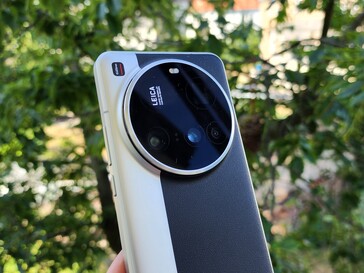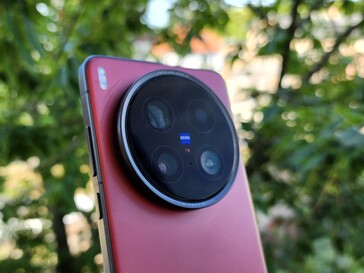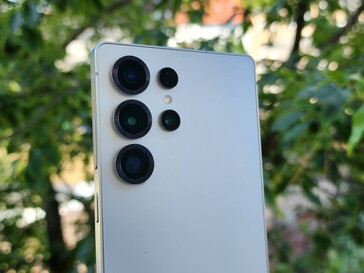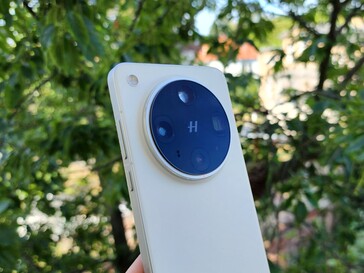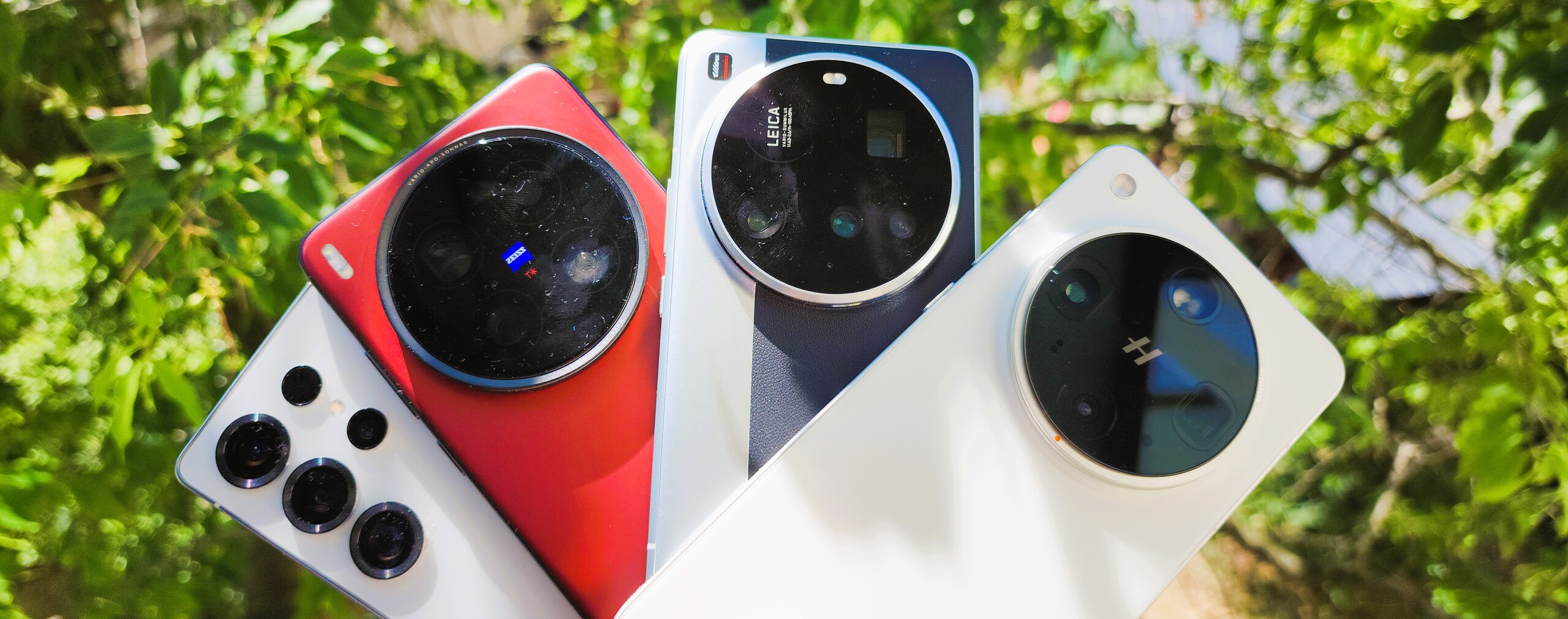
Camera comparison with the best smartphones of 2025: Xiaomi is a complete failure at night
The best smartphones cameras of 2025 | Part 1.
We're comparing the crème de la crème in the high-end smartphone segment. With the Samsung Galaxy S25 Ultra, Oppo Find X8 Ultra, Xiaomi 15 Ultra and Vivo X200 Ultra, all devices should take "ultra" good photos and videos. Read on to find out who wins the battle for the camera throne.Marcus Herbrich, 👁 Marcus Herbrich (translated by Enrico Frahn) Published 🇩🇪 🇫🇷 ...
Preliminary verdict: Camera review of the best smartphones in 2025
Our camera test revealed that current top phones produce appealing photos with their ultrawide cameras in daylight. However, all four smartphones are blurry at the edges of the image, with the Find X8 Ultra being the most affected. Regardless of light conditions, the Vivo X200 Ultra benefits from its large image sensor and delivers sharp pictures in most situations.
For those who prioritize ultrawide and zoom capabilities, Oppo and Vivo are fitting options, while Samsung excels with its selfie camera. Due to poor low-light performance, Xiaomi is a reliable choice for excellent photos only in daylight.
With less light, the Xiaomi 15 Ultra has significant issues with both its ultrawide and telephoto lenses. The Xiaomi flagship struggles with focusing, which detracts from its otherwise decent camera performance. Samsung has the longest exposure time on the Galaxy S25 Ultra, which compensates for its relatively small sensors, at least when taking pictures of stationary objects. Overall, the Samsung phone can't quite keep up with flagships from Chinese competitors.
For selfies taken with the front camera, personal preference is the main deciding factor. While the Vivo X200 Ultra and Samsung Galaxy S25 Ultra impress with consistent sharpness, the Xiaomi 15 Ultra and Oppo Find X8 Ultra deliver appealing portraits.
Check out the conclusive second part of our big smartphone camera comparison and review here.
Price and availability
Oppo Find X8 Ultra and Vivo X200 Ultra
These four "Ultra" smartphones are expensive. The Oppo Find X8 Ultra and Vivo X200 Ultra are currently only available via import in Europe. Prices for the Oppo flagship start at €800 for the base model, and the Vivo phone costs at least €870 at Trading Shenzhen.
Samsung Galaxy S25 Ultra
At the time of writing, prices for the Samsung Galaxy S25 Ultra start at approximately €920 in Germany, which is significantly cheaper than the recommended retail price of €1,449.
Xiaomi 15 Ultra
The Xiaomi 15 Ultra is also available significantly below its MSRP of €1,500, currently starting at roughly €1,060. Via import, the Xiaomi flagship can even be found for as low as €750.
Comparing the best Android smartphones
One of the most important aspects of high-end smartphones is undoubtedly camera quality. In 2025, it remains a key factor for choosing a new smartphone. The currently best phones have different approaches regarding megapixel count or image sensor size to capture the best possible photos. The technical specifications of these different camera modules can be found in our detailed reviews.
In the first part of our camera comparison, we will examine photos from the selfie and ultrawide cameras, as well as the telephoto lenses. In the upcoming second part, we will cover the wide-angle main cameras, including videos.
Ultrawide Android smartphone cameras compared
When looking at daytime photos taken with ultrawide cameras, it's clear that all phones show some softness outside the center of the image. The Oppo Find X8 Ultra in particular shows noticeable blurriness at the edges, which impacts overall image quality. In contrast, the Vivo X200 Ultra impresses with lots of detail and excellent baseline sharpness. However, the Vivo flagship oversaturates colors in vivid mode, especially reds and primary colors. For those who prefer less "vibrant" colors, the Zeiss mode is a good alternative setting.
Xiaomi also has different color settings. Leica Authentic provides more natural colors than Leica Vibrant, which we used for this comparison. For our test pictures and all other photos, we used the smartphones’ default camera settings and corresponding color modes. The photos don't always use the full sensor resolutions by default. Instead, they are processed via pixel-binning by some brands, which effectively increases the size of individual pixels.
The Xiaomi 15 Ultra stands out with its high dynamic range, which allows it to retain details in both bright and dark areas, even in high-contrast scenes. In comparison, the Samsung Galaxy S25 Ultra's dynamic range sometimes appears a bit limited, causing shadowy areas that look too dark. In our horse motif shot, the Samsung phone is also the only one that noticeably distorts the red color.
In low-light conditions, the large image sensor of the Vivo X200 Ultra makes a difference. It results in a pleasing and quite uniform sharpness, which is especially noticeable when looking at the bookshelf. However, red tones are no longer entirely natural, which slightly detracts from the overall good impression.
Compared to the Galaxy S25 Ultra, the Vivo X200 Ultra uses a noticeably shorter exposure time in complete darkness. This negatively impacts illumination and sharpness, so users should switch to the dedicated night mode that the camera app also suggests automatically. With the Samsung Galaxy S25 Ultra, you'll need to hold the phone as still as possible to avoid blurry images. Its longer exposure time allows it to perform slightly better than the competition, though the quality isn't significantly higher.
The Xiaomi 15 Ultra clearly falls behind in this area. Night photos show lots of blurriness, particularly at the edges, making details almost indistinguishable and heavily smudged.
High-end smartphone zoom cameras compared
In terms of telephoto pictures, we focused on zoom ranges between 4x and 10x, as these provide usable image quality for everyday shots. For those who want to zoom in even closer, Oppo and Xiaomi offer up to 120x magnification, while Vivo and Samsung offer slightly less powerful zoom features. However, it should be noted that Samsung's stabilization at such high zoom levels is the most impressive. In comparison, the Xiaomi 15 Ultra is somewhat more sensitive in this regard.
When it comes to zoom photos, Chinese flagships perform similarly well. Whether it's Oppo, Xiaomi or Vivo, daylight shots with up to 10x zoom look good, as all three smartphones offer decent image quality.
However, there are some differences that are worth mentioning. The Xiaomi 15 Ultra and Oppo Find X8 Ultra tend to render subjects noticeably softer. This means images appear slightly less sharp, while the Vivo X200 Ultra relies more on its software processing, leading to a slightly higher contrast without truly offering more detail. Here, personal preference naturally plays a significant role in whether a more natural picture with less artificial sharpness is preferred or not.
Compared to its rivals, the Galaxy S25 Ultra only holds its own at 10x zoom. But even here, the Samsung smartphone produces the weakest photos from our perspective. At lower zoom levels, Samsung struggles to compete with the Xiaomi 15 Ultra, as its telephoto camera with a native 3x zoom is showing its age. Samsung has been using the rather small Sony IMX754 sensor for several generations now, which is an obvious disadvantage compared to more modern sensors like the Samsung ISOCELL HP9 in the Xiaomi 15 Ultra and Vivo X200 Ultra, or the LYT-700C in the Oppo Find X8 Ultra.
In low-light conditions, these roles are reversed. As long as there's a sufficiently bright light source, like in our streetlamp motif, zoom shots from the Vivo X200 Ultra and Oppo Find X8 Ultra turn out quite well. Samsung’s flagship also shows a comparable amount of detail and solid sharpness in such scenes, which is surprising given the smaller sensors, which would be expected to perform worse in low light. But the Galaxy S25 Ultra does a good job here, although it also relies on long exposure times.
Similar to the ultrawide camera, the Xiaomi 15 Ultra shows significant weaknesses in low-light zoom photos. If there isn't enough light, the smartphone is practically unusable. Its focus at night is overwhelmed and the images are massively blurred. The Xiaomi 15 Ultra also struggles with exposure in low light.
Selfie pictures from flagship phones in comparison
When it comes to selfie photos, there is no clear loser or winner. All handsets deliver good images when using the front-facing camera. Even in sunlight, subjects usually remain well-exposed, and skin tones appear natural.
Vivo and Oppo favor high-contrast rendering, which might not appeal to everyone. In terms of sharpness, even outside the center of the image, selfie shots from the Vivo X200 Ultra and Galaxy S25 Ultra are particularly impressive. In comparison, the Xiaomi 15 Ultra and Oppo Find X8 Ultra lack a bit of clarity. Beard textures, for instance, can appear pretty blurred. However, the conclusion on which camera delivers the best results likely comes down to personal preference.
Differences are more pronounced in portrait mode, and the exposure isn't always perfect. It's quite obvious that the X200 Ultra fails to blur the background properly in portrait mode.
Image comparison
Choose a scene and navigate within the first image. One click changes the position on touchscreens. One click on the zoomed-in image opens the original in a new window. The first image shows the scaled photograph of the test device.
SelfieSelfie portrait.






